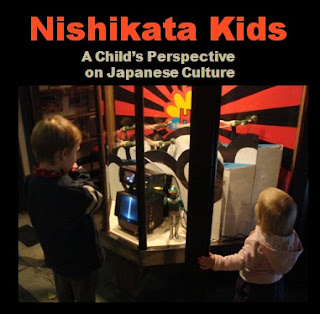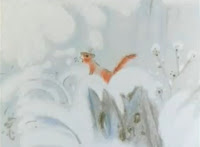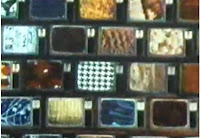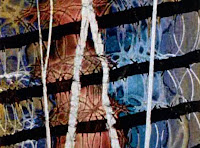Winning an academy award is no different from winning an election in any mature democracy. You have to a) appeal to an electorate that skews old and is conservative with a small “c” and b) spend a ton of money on advertising. And, just as in a normal election, the best man (read integrity, vision, talent) rarely wins. Rather, the film that wins is typically the most banal, the least offensive, that harkens back to some mythical golden age – with Harvey Weinstein taking the role of Karl Rove, blanket-bombing DVD screeners and arranging friendly articles in the trade mags. How else do you explain DR STRANGELOVE losing to MY FAIR LADY? The triumph of SHAKESPEARE IN LOVE and DRIVING MISS DAISY? Or BROKEBACK MOUNTAIN being snubbed?
Still, for all that, the Oscars do matter, just not as arbiters of taste. Rather, they matter because an Oscar nomination, let alone a win, undoubtedly boosts the box office of the winning films, and adds a million or so to the salary of the individual winners. And as we here at Movie Reviews for Greedy Capitalist Bastards are all about the phat cash, it would be hypocritical not to admire someone like Harvey Weinstein who so brilliantly games the system. Any investment banking analyst looking to corner the bonus pool could do worse than study his playbook.
Bearing all this in mind, it comes as no surprise that the Academy has narcissistically and indulgently nominated movies that are nostalgic for the history of cinema – HUGO (11 nominations); THE ARTIST (10 nominations) and MY WEEK WITH MARILYN (2 nominations) – the latter two also pimped out by Harvey. HUGOis a particularly commercial pick, as the movie involved a respected auteur using 3D, a technology that badly needs reinvigorating and upon which the studios are depending to stymie piracy and boost ticket prices.
It also comes as no surprise to see the Academy overlook provocative, daring, pioneering movies such as SHAME, DRIVE and TYRANOSSAUR,not to mention compelling performances from Michael Fassbender in SHAME, Albert Brooks and Ryan Gosling in DRIVE, Olivia Colman in TYRANOSSAUR,Tilda Swinton in WE NEED TO TALK ABOUT KEVIN, Vanessa Redgrave in CORIOLANUS... And in the documentary category, where is SENNA?
The full list of nominations is below. I have underlined those that I think will win. I suspect THE ARTIST will pip HUGO at the post in the major categories, but that as with THE AVIATOR, Scorsese will be fobbed off with all the technical awards, except for a couple handed out as “end of series” commemorations to HARRY POTTER.
I haven’t bothered indicating who I think should win, as so few of the nominees would make my final cut. Most of the people and films here are harmless. But I do find the nominations for THE GIRL WITH THE DRAGON TATTOO, THE DESCENDENTS, WAR HORSE and MONEY BALL particularly wrong-headed. In terms of positive surprises, it was good to see Woody Allen get a directing and Best Picture nom for MIDNIGHT IN PARIS.
Overall though, one can but think this is a pretty mediocre list coloured by the Academy’s nostalgia and narcissism. In twenty years time, I suspect the only three films that people will still be watching will be SHAME, TREE OF LIFE and A SEPARATION. The rest is just food for worms.
Best Actress in a supporting role: Bérénice Bejo, The Artist; Jessica Chastain, The Help; Melissa McCarthy, Bridesmaids; Janet McTeer, Albert Nobbs*; Octavia Spencer, The Help
Best actor in a supporting role: Kenneth Branagh, My Week with Marilyn; Jonah Hill, Moneyball; Nick Nolte, Warrior; Christopher Plummer, Beginners*; Max Von Sydow, Extremely Loud and Incredibly Close
Best actress in a leading role: Glenn Close, Albert Nobbs; Viola Davis, The Help; Rooney Mara, The Girl with the Dragon Tattoo; Meryl Streep, The Iron Lady; Michelle Williams, My Week with Marilyn
Best actor in a leading role: Demián Bichir, A Better Life; George Clooney, The Descendants; Jean Dujardin, The Artist; Gary Oldman, Tinker Tailor Soldier Spy; Brad Pitt, Moneyball
Best director: Michel Hazavanicius, The Artist; Alexander Payne, The Descendants; Martin Scorsese, Hugo; Woody Allen, Midnight in Paris; Terrence Malick, The Tree of Life
Best original Screenplay: The Artist; Bridesmaids; Margin Call; Midnight in Paris; A Separation
Best adapted screenplay:The Descendants; Hugo; Ides of March; Moneyball; Tinker Tailor Soldier Spy
Best foreign language film: Bullhead; Footnote; In Darkness; Monsieur Lazhar; A Separation
Best animated film:A Cat in Paris; Chico And Rita; Kung Fu Panda 2; Rango; Puss in Boots
Best picture: War Horse; The Artist; Moneyball; The Descendants; The Tree of Life; Midnight in Paris; The Help; Hugo; Extremely Loud and Incredibly Close
Art direction: The Artist; Harry Potter and the Deathly Hallows, Part 2; Hugo; Midnight in Paris; War Horse
Cinematography; The Artist; The Girl with the Dragon Tattoo; Hugo; The Tree of Life; War Horse
Costume design: Anonymous; The Artist; Hugo; Jane Eyre; W.E.
Documentary feature:Hell and Back Again; If A Tree Falls: A Story of the Earth Liberation Front; Paradise Lost 3: Purgatory; Pina; Undefeated
Documentary short subject: The Barber of Birmingham: Foot Soldier of the Civil Rights Movement; God is the Bigger Elvis; Incident in New Baghdad; Saving Face; The Tsumani and the Cherry Blossom
Film editing: The Artist; The Descendants; The Girl with the Dragon Tattoo; Hugo; Moneyball
Sound editing: Drive; The Girl with the Dragon Tattoo; Hugo; Transformers: Dark of the Moon; War Horse
Sound mixing: The Girl with the Dragon Tattoo; Hugo; Moneyball; Transformers: Dark of the Moon; War Horse
Visual effects: Harry Potter and the Deathly Hallows, Part 2; Hugo; Real Steel; Rise of the Planet of the Apes; Transformers: Dark of the Moon
Make up: Albert Nobbs; Harry Potter and the Deathly Hallows, Part 2; The Iron Lady
Music (original score): The Adventures of Tintin: The Secret of the Unicorn; The Artist; Hugo; Tinker Tailor Soldier Spy; War Horse
Music (original song): The Muppets; Rio
Short film (animated):Dimanche / Sunday; The Fantastic Flying Books of Mr Morris Lessmore; La Luna; A Morning Stroll; Wild Life
Short film (live action): Pentecost; Raju; The Shore; Time Freak; Tuba Atlantic

















































